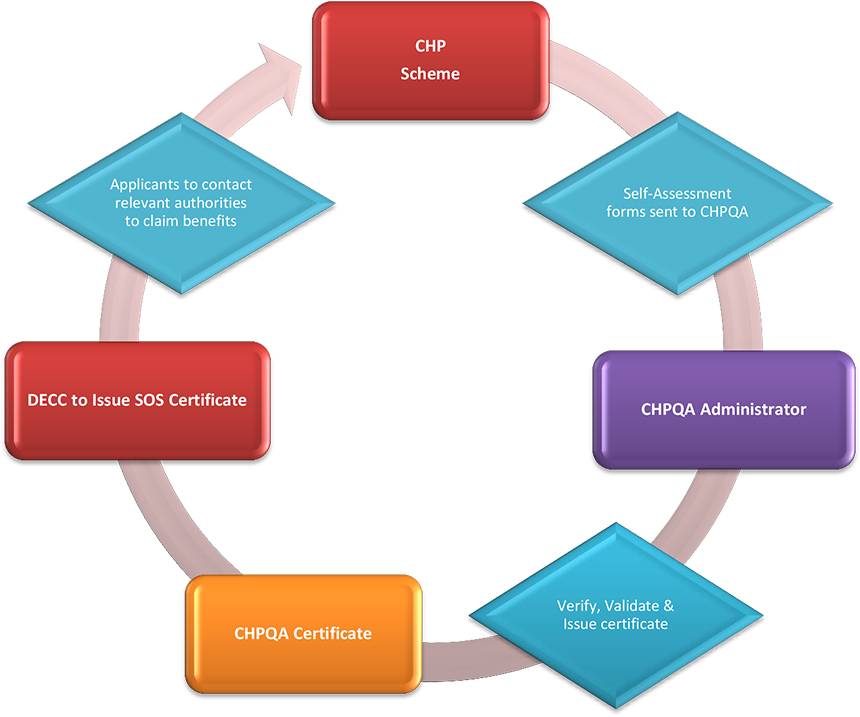CHP – What you need to know | 2EA

Combined Heat and Power, also known as cogeneration or CHP, is an extremely efficient process that harnesses the heat that is produced when energy is generated. By generating heat and power together, carbon emissions can be reduced by up to 30% by replacing heat that would otherwise be normally supplied by boilers.
For the majority of businesses, using CHP is one of the best ways to improve energy-efficiency and reduce energy costs, with existing users generally saving around 20% on their energy bills.
On top of the costs saved by increased energy efficiency, employing CHP also allows a business to be exempt from the Climate Change Levy (CCL), resulting in further savings.
- How can CHP help with CCL?
- Obtaining a CHPQA Certificate
- ‘Simple’ Scheme Submission
- ‘Complex’ Scheme Submission
- Applying for CCL Exemption
- An Interview with Andrew Gardner
- CCL/CHPQA Management Packages

How can CHP help with CCL?
CHP schemes that are fully or partially certified as “Good Quality CHP” under the Combined Heat and Power Quality Assurance (CHPQA) programme and have obtained a Secretary of State (CHP) Exemption Certificate are exempt from the rates of CCL on the fuel they utilise.

Obtaining a CHPQA Certificate
In order to obtain a CHPQA certificate a number of self-assessments need to be provided by the responsible person. The first step is to fill out a CHPQA registration form (Form F1). Following this, the scheme administrator will notify the responsible person of their unique registration number as well as provide them with a username and password to access the online electronic submission system.
The responsible person can now complete the self assessment submission forms, the route depending on the complexity of the scheme and whether it is a ‘Simple’ or ‘Complex’ scheme.


Simple Scheme Submission
A scheme is identified as ‘Simple’ if it meets the following criteria:
- Generating capacity < 2MWe
- Single reciprocating engine
- Single conventional fuel used
- No heat-only boiler present
If this is the case and simple scheme submission applies then the shortened versions of the CHPQA forms can be used, simplifying the application process.
New Applicants
As a new applicant for a simple scheme, form F3(s) must be completed:
Form F3(s)
This form is for assessment of schemes that are not yet operational and is used to provide technical details and anticipated performance based on design information prior to commissioning.
Existing Schemes
Once a scheme is commissioned and running, and sufficient operational data has been collected, then Forms F2(s) and F4(s) must be completed.
Form F2(s)
This form is used to provide details of the CHP scheme, such as installed equipment capacity and type etc. (this form will only need resubmitting if changes have been made to the scheme).
Form F4(s)
If your scheme has at least one month of operational data this form is used to provide details of the scheme’s actual performance. You only need submit annual figures for:
- Hours run
- Electricity generated
- Fuel consumed
- Heat utilised

‘Complex’ Scheme Submission
When completing the assessment for a ‘Complex’ scheme the sequence of forms is parallel to the simple scheme, only with more detail required.
A scheme is complex if it meets any of the following criteria:
- Generating capacity ≥ 2 MWe
- Prime mover not a single reciprocating engine
- Non-conventional fuel used
- Fired boiler(s) included within scheme boundary
New applicants
If your scheme is still at the design stage, under construction or if you have insufficient operational data then you have to complete Form F3.
The procedures are otherwise the same as for the simple scheme, outlined above.
Existing schemes
If your scheme is already commissioned and running, with sufficient operational data (at least one month), then Forms F2 and F4 must be completed.
Form F2
This form is used to provide a description of the scheme. The complex scheme requires a list of all installed equipment (prime movers and boilers and their capacity, type and age etc.) and metering equipment that will be used to monitor the performance of the scheme. You will also need to provide a scheme schematic showing all the listed equipment and metering.
Form F4
This form is used to provide the details of actual performance. You need to submit the following monthly figures:
- Hours run
- Electricity generated
- Fuel consumed
- Heat utilised
You will also need to submit supporting documentation. This may include additional calculations necessary for determining the overall efficiency (the ‘Quality Index’) of the scheme.

Applying for CCL Exemption
Once a CHPQA certificate has been issued there is the option to obtain or maintain your Secretary of State CHP Certificate (SOS certificate). A request should be made by completing the appropriate section at the end of the annual CHPQA self-assessment form.
The SOS certificate is then issued by the department of Energy and Climate Change (DECC) and gives you the legal entitlement to claim CCL exemption on good quality CHP fuel and electricity.


CCL/CHPQA Management Packages
2EA® provide three packages to help you obtain and maintain a valid CHPQA certificate as well as manage your CCL exemption. Quotations for individual packages are available upon request.
If you require any further information about CCL, CHPQA or any of the other services 2EA® provide, please feel free to get in touch.


